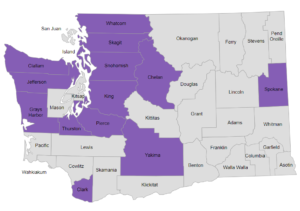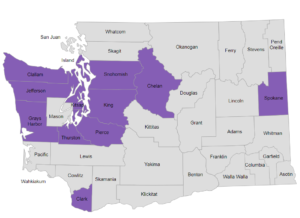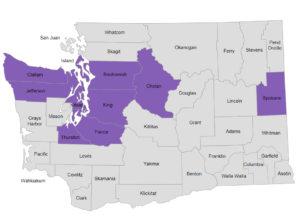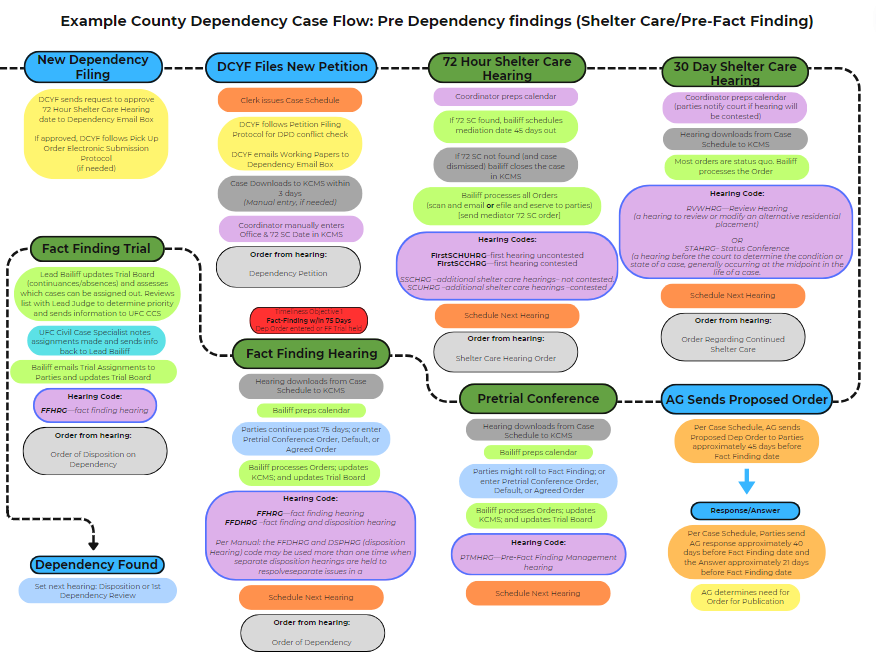Written in 2011 and updated in 2014 by Jana Heyd,1 Cheryl Wolfe,2 and Pam Kramer3
Chapter Sections
Introduction
In 2010, the legislature modified the statutory scheme for guardianship proceedings which flow from dependency cases. Effective June 20, 2010, guardianship proceedings are initiated pursuant to the requirements of RCW 13.36 and are typically referred to as Title 13.36 guardianships.4 Dependency guardianships previously established under RCW 13.34 remain in effect, but may be converted to a Title 13.36 guardianship.5 Title 13.36 was created in order to “create a separate guardianship chapter to establish permanency for children in foster care through the appointment of a guardian and dismissal of the dependency.”6
§1 Title 13.36 Guardianships
Guardianships are recognized in Washington as a permanent plan available to dependent children and a child who cannot be safely reunified with his or her parents.7 If a guardianship petition is filed, the petition may be granted if guardianship, rather than termination of parental rights or any further attempt at reunification, is in the child’s best interests.8 The guardian is granted full custody of the child with the right to make most decisions regarding the child’s health, education and care until the child is 18 years old.9 A petition for guardianship may not be filed until the child has been out of the parent’s home pursuant to a finding of dependency for six months.10
Any party to a dependency proceeding may file a Title 13.36 guardianship petition.11 A proposed guardian has the right to intervene in the proceedings.12 The parties have the right to present the testimony of witnesses and the rules of evidence apply to the proceedings.13 The court must appoint a guardian ad litem (GAL) or attorney for the child in Title 13.36 guardianship proceedings.14
§2 Burden of Proof
A guardianship shall be established if the court finds by a preponderance of the evidence15 that (a) it is in the child’s best interests to establish a guardianship rather than terminate the parent-child relationship and proceed with adoption, or to continue efforts to return custody of the child to the parent16 and (b):
- All parties agreed to entry of the guardianship order and the proposed guardian is qualified; or
- (i) The child has been found to be a dependent child under RCW 13.34.030;
(ii) A dispositional order has been entered pursuant to RCW 13.34.130;
(iii) At the time of the hearing on the guardianship petition, the child has been removed from the custody of the parent for at least six consecutive months following a finding of dependency under RCW 13.34.030;
(iv) The services ordered under RCW 13.34.130 and 13.34.136 have been offered or provided and all necessary services, reasonably available, capable of correcting the parental deficiencies within the foreseeable future have been offered or provided;
(v) There is little likelihood that conditions will be remedied so that the child can be returned to the parent in the near future; and
(vi) The proposed guardian has signed a statement acknowledging the guardian’s rights and responsibilities toward the child and affirming the guardian’s understanding and acceptance that the guardianship is a commitment to provide care for the child until the child reaches age 18.17
A guardianship may be established for a child who has no legal parent if, in addition to the above findings, the court determines that one or more exceptional circumstances exist and the benefits of a guardianship for the child outweigh any potential disadvantage of having no legal parent.18
Exceptional circumstances may include but are not limited to the following:
- The child has special needs and a suitable guardian is willing to accept custody and able to meet the needs of the child to an extent unlikely to be achieved through adoption; or
- The proposed guardian has demonstrated a commitment to provide for the long-term care of the child and (i) is a relative of the child; (ii) has been a long-term caregiver for the child and has acted as a parent figure to the child and is viewed by the child as a parent figure; or (iii) the child’s family has identified the proposed guardian as the preferred guardian, and, if the child is age 12 years or older, the child also has identified the proposed guardian as the preferred guardian.19
If the above elements are established, an order must be entered appointing a guardian and the court shall issue a letter of guardianship.20 If the guardian has not previously intervened, the guardian shall be made a party to the proceeding at the time the guardianship order is entered.21
§3 Qualifications to Serve as Guardian
To qualify as a guardian, the person must be over 21 years of age and meet the minimum requirements to care for children set forth in RCW 74.15.030.22 Extended family members are likely the most common persons that offer to serve as a youth’s guardian. A guardianship is entered into without terminating the parents’ rights, although in some cases, children whose parental rights were previously terminated have been the subject of a dependency guardianship. In those cases (in which the parents’ rights were previously terminated), the parent would not have any legal right to the child and would not be an ongoing party to the dependency case and would therefore not have the ability to seek to modify or vacate the guardianship order.23
Within available funds and DSHS rules, guardians may qualify for guardianship subsidies.24
§4 Guardianship Order
The guardianship order must specify the guardian’s rights and responsibilities concerning the care, custody and control of the child, the authority to receive and expend the child’s property or funds, the frequency of contact between the child and parents and the child’s siblings if applicable, and the need and scope of ongoing court oversight.25 A list of rights and duties are set forth in RCW 13.36.050(2).
The order may not give the guardians the discretion to provide visitation. Rather, the statute has been interpreted to require the court to set the appropriate frequency of visitation.26 The appropriate visitation may include no visitation at all. However, this is a decision to be made by the court.27
If the child has independent funds or valuable property other than routine benefits received from a public social service agency, the guardian must provide a written annual accounting with appropriate documentation to the court regarding the receipt and expenditure of the funds or property.28
Upon entry of the guardianship order, the court dismisses the dependency action.29 The court may not order DSHS or another supervising agency to supervise or provide case management after the guardianship order is entered and the dependency is dismissed.
§5 Modification of the Guardianship
A guardian or parent of a child may petition the court to modify the visitation provision of the guardianship order.30 This is done by filing a motion and affidavit supporting the requested modification.31 Notice must be provided to the nonmoving parties and opposing affidavits may be filed.32 The court may deny the motion in the absence of a showing of adequate cause for a hearing on the motion.33 Where adequate cause is demonstrated, a hearing on an order to show cause why the requested modification should not be granted shall be scheduled.34 Where the court finds that a motion to modify was brought in bad faith, the court may assess attorneys’ fees and court costs against the moving party.35
§6 Termination or Expiration of the Guardianship
The guardianship remains in effect until the child is 18 years old or until the court terminates the guardianship, whichever occurs sooner.36 Children who are in RCW 13.36 guardianships are not eligible for extended foster care (foster care after the age of 18.) (see WAC 388-25-0510)
Any party may request termination of a guardianship by filing a petition and supporting affidavit alleging a substantial change in circumstances of the child or guardian and that termination is in the child’s best interests.37 The petition and affidavits must be served on the other parties to the guardianship and DSHS or other supervising agency.38
If the court finds that there has been a substantial change in the circumstances of the child or guardian and that termination is in the child’s best interests, the finding must be based on facts that occurred subsequent to the entry of the guardianship order or that were unknown to the court when the guardianship was established.39 A guardian’s military service is not by itself a basis for termination of the guardianship.40 A guardianship may be terminated on the agreement of the guardian, child if 12 or older, and a parent seeking to regain custody of a child if the court finds by a preponderance of the evidence that (i) the parent has successfully corrected his/her parenting deficiencies, (ii) returning the child to the parent’s care no longer is a risk to the child’s health, safety or welfare, and (iii) the relief requested is in the child’s best interests.41
Upon entry of an order terminating a guardianship, the court may (i) grant the child’s parent with legal and physical custody of the child; (ii) appoint a substitute guardian with physical and legal custody of the child; or (iii) direct the child to be temporarily placed in the custody of DSHS for placement and directing DSHS to file a dependency petition.42
§7 Existing Title 13.34 Guardianships (i.e., Dependency Guardianships)
Guardianships established under RCW 13.34 (i.e., all guardianships established prior to June 20, 2010), remain in effect unless terminated or converted to Title 13.36 guardianships.
21.8 Modification or Termination of a Dependency Guardianship
Any party may request that a dependency guardianship order be modified or terminated.43 Notice of such proceedings must be provided to all parties including DSHS.44 The court may only modify or terminate a guardianship order if it finds by a preponderance of the evidence that there has been a substantial change in circumstances and that modification or termination is in the child’s best interests.45 Modifications or a termination can address changes that have occurred in the child’s placement, changes in visitation with a parent, or changes in the circumstances of the guardian.
Once a dependency guardianship is terminated, the guardian is no longer a party to the proceedings and does not have any rights or responsibilities with respect to the child.46 When the dependency guardianship is terminated the child may either be returned to a parent or ordered into an out of home placement.47 The child may not be returned home unless the court finds that the reason(s) for removal no longer exist and that return home is in the child’s best interests.48 Review hearings, including permanency planning hearings, must resume.49
§9 Conversion of a Dependency Guardianship to a Title 13.36 Guardianship
Either a dependency guardian or DSHS may file a petition requesting the court to convert a dependency guardianship to a Title 13.36 guardianship.50 The court should grant the petition if both DSHS and the dependency guardian agree and the court finds that conversion is in the child’s best interests.51 Upon entry of the Title 13.36 guardianship order, the dependency is dismissed.52
§10 Guardianship from the Practitioner’s View
Guardianships may be an effective permanency planning option if the child is older, the child has a relationship with the parent and does not want the parent’s rights terminated, and the caregiver is confident that the guardianship will provide the child with a stable placement. Practitioners have mixed sentiments about guardians, as there is some concern that the biological parent (whose parental rights are still intact) may frequently request a court hearing for modifying the guardianship, thereby not providing the child with a sense of stability especially if there is a possibility that the guardianship could be modified or set aside. The risk of ongoing court hearings is less likely since the 13.36 guardianship statute was enacted. However, there is still some concern among practitioners about how “permanent” a guardianship is. The younger the child, the less likely DSHS will support a guardianship.
§11 Guardianships and Benefits
Some caregivers may be willing to enter into guardianship agreements but may have concerns about what changes, if any, could occur with the child’s medical benefits, guardianship subsidy payments (if any), or any other benefits. When considering a guardianship action, the caregiver should be fully informed about what benefits the child may lose or gain because of the guardianship. The potential guardian should be advised early in the placement of the child about financial and other benefits and may consider becoming licensed in order to qualify for R-GAP benefits.
A dependency guardian who is a licensed foster parent at the time the guardianship is established and who has been the child’s foster parent for at least six consecutive months preceding the entry of the guardianship order may be eligible for a guardianship subsidy on behalf of the child.53
Children’s Administration (CA) provides an on-going monthly subsidy through the Relative Guardianship Assistance Program (R-GAP) for dependent youth. The R-GAP program provides a monthly cash payment and Medicaid. The RGAP benefit can be up to 90 percent of what would be paid if the child were in foster care. This program is available for youth and relatives that meet the following criteria:
The requirements of this program are as follows:
- Youth must be dependent, IV-E eligible, and placed with a licensed relative for a minimum of six consecutive months, and return home and adoption have already been determined to not be in the child’s best interest.
- The relative must be a relative as defined in RCW 74.15.020 (2) and must be licensed for six consecutive months.
- CA staff must document case management and efforts prior to submitting a plan of guardianship as a permanency plan to the court, and have regional administrator or designee approval. (See attached Guardianship approval checklist.)
Persons not eligible for R-GAP subsidy can apply through the local Community Service Office (CSO) for a non-needy Temporary Assistance for Needy Families (TANF) grant, however beginning in November 2011, the income of the guardian will be considered as means-testing will apply.
The Medicaid is transferred from CA to the local CSO for medical.
APPENDIX I: Guardianship Approval Checklist
CHILDREN’S ADMINISTRATION
Guardianship Approval Checklist
CHILD’S NAME DATE OF BIRTH
______________________________________________________ ________________________
NAME OF PROPOSED GUARDIAN(S) NAME OF SOCIAL WORKER
____________________________________ ________________
□ A Shared Planning meeting has occurred which included the following participants as required:
- Child (when appropriate per age and developmental capacity)
- Potential Guardian
- Birth Parents (when appropriate and available)
- Current Caregivers (if different from potential Guardian)
□ The child’s/youth’s opinions were considered in determining the Permanent Plan.
□ The completed Shared Planning Meeting form and sign-in sheet are attached.
Options Considered:
□ Adoption is not in the child’s/youth’s best interest because (explain briefly):
□ Return Home is not in the child’s/youth’s best interest because (explain briefly):
□ Alternate Permanent Plan is not in the child’s/youth’s best interest because (explain briefly):
□ The current caregiver was asked about adopting the child.
The proposed guardian is a □ Relative □ Non-Related □ Foster Parent □ Other Suitable Person
□ CA social worker has complied with all Federal Indian Child Welfare Act requirements with respect to the child. Tribal or LICWAC decision □ supports or □ does not support a plan of guardianship.
□ A thorough relative search has been conducted and documented.
□ Placement with siblings was considered.
□ The proposed guardian understands and is willing to accept their roles and responsibilities to be a guardian and has signed the Declaration of Proposed Guardian. (Please attach).
□ The proposed guardian is informed about and is prepared to manage any court ordered visits with birth family members.
□ CA has provided disclosure of information about the child to the proposed guardian, in order to ensure proper care for the child. (Court reports, child’s medical, educational needs, evaluations, etc.)
□ The proposed guardian has an approved home study. (Case Services Policy Manual Section 3240, Practices and Procedures Manual Section 4261, RCW 74.15.090).
□ The proposed guardian meets the requirements of the R-GAP and will apply for a guardianship subsidy. □ Yes □ No
□ The proposed guardian has been informed that s/he is not eligible for a guardianship subsidy through CA but may be eligible for assistance through the local Community Service Office.
COMMENTS:
I approve establishing a guardianship for this child. □ Yes □ No
SUPERVISOR SIGNATURE DATE
___________________________________________________________________
I approve establishing a guardianship for this child. □ Yes □ No
AREA ADMINISTRATOR (OR DESIGNEE) SIGNATURE DATE
___________________________________________________________________
I approve establishing a guardianship for this child. □ Yes □ No
REGIONAL ADMINISTRATOR (OR DESIGNEE) SIGNATURE DATE
_____________________________________________________________
APPENDIX II: Permanency Planning Comparison Chart
Permanency Planning Benefits and Limitations
| Objective | Legal Status | Legal Custody & Caregiver Responsibility After Permanent Plan Achieved | Birth / Adoptive Parent Rights/ Responsibility
|
Financial Services Available / Monthly Subsidy
|
Medical | Educational Services | Services Post 18 | |
| Reunification
Note: CA does not provide ongoing services or supervision. |
Preferred option: When safety threats are mitigated or aggravated circumstances do not exist.
Maintains family connections and provides permanency beyond age 18. |
Parental rights remain with birth/adoptive parent. | The dependency is dismissed and all care and custody is returned to the parents. | Full parental rights and responsibility. | May be eligible for services through DSHS agencies.
Individuals must qualify for specific programs. |
Responsibility of the family. | May be eligible for limited services dependent upon age youth returned home and individual program requirements. | N/A |
| Adoption
Note: CA does not provide ongoing supervision. Post Adoption Services based upon child’s need and family |
Provides permanency for a child by becoming a permanent and legal member of a family with all the legal rights of a birth child.
Adoption is a lifelong legal relationship. |
Parental rights of parents must be terminated unless it is a customary adoption established through Tribal court. | Upon entry of adoption decree, child becomes legal child of adoptive parents. The adoptive parents have all care, custody and legal rights to make decisions on the child’s behalf. Child has inheritance rights. | Adoptive parents assume full parental rights. Birth parents have no parental rights after termination.
Birth and adoptive parent may have ongoing contact under an open communication agreement. |
Adoptive parents may apply for assistance through Adoption Support Program and the child may be eligible for a monthly subsidy, medical and counseling assistance as specified in the adoption support agreement. | Medical coverage as specified in the adoption support agreement. | Some youth may be eligible for additional post-high school grants and scholarships.
Additional information can be found at: http://independence.w a.gov/ |
Adoption support benefits will automatically stop on the youth’s 18th birthday.
Adoption Support may continue if the youth meets eligibility requirements and the parent(s) have provided documentation of the youth’s continuation in high school prior to the 18th birthday. |
| Title 13 Guardianship
Note: CA does not provide ongoing services or supervision. *Children in guardianships are not considered foster |
Provides permanency for a child with an approved adult when return home and adoption has been determined not to be in the child’s best interest.
Legal relationship ends on the child’s 18th birthday |
Parental rights are not required to be terminated.
Although the parent continues to be the legal parent the guardian has full care, custody or control of the child. The dependency is dismissed. |
The legal guardian maintains physical and legal custody with full responsibility for care, custody and the right to make decisions regarding the child.
The guardian can choose whether or not to provide an inheritance to a child, it is not a right for the child. |
The guardianship order may include visits. All visits are the responsibility of the guardian.
The court may continue to order that the birth parent is still responsible for child support. |
A subsidized Guardianship may be available to licensed relatives that meet the requirements of the Relative Guardianship Assistance Program.
Or Guardians may apply for financial support through local community service office |
Medical is provided through Medicaid Title XIX as specified in the RGAP agreement.
Or Guardians may apply for medical through the local community service office or put on their own insurance. |
Youth generally do not qualify for secondary education scholarships or grants that are designated for youth in foster care.
Youth eligibility into post high school educational programs is dependent upon program requirements. Refer to Educational Resources. Additional information can be found at: http://independence.w a.gov/ |
Guardianship subsidy automatically ends on the youth’s 18th birthday. If the guardianship was established after the youth’s turned 16, is enrolled in high school or a GED program the subsidy may continue. Please check with your gatekeeper.
A youth may apply for TANF or SFA if he/she is under age 19 and attending school (participating full time and progressing toward secondary education). WAC 388-404-0005 |
| Third Party Custody
Note: CA does not provide ongoing services or supervision. |
Provides permanency for a child with a court appointed non-parent custodian.
Legal relationship ends on the child’s 18th birthday. |
Parental rights remain intact.
Although the parent continues to be the legal parent the guardian has full care, custody or control of the child. Any dependency action will be dismissed. |
The third party custodian becomes legal guardian with full responsibility for care, custody and the right to make decisions regarding the child. | Birth Parent remains the legal parent and is responsible for child support.
Custody orders may include visits. Modification of custody orders may occur if a substantial change has occurred |
May apply for financial support through other DSHS agencies.
Eligibility for medical, financial and food voucher programs is dependent upon program requirements. |
May apply for medical through the local community service office. | Youth generally do not qualify for secondary education scholarships or grants designated for youth in foster care.
However, if a youth was in foster care for at least 30 days after turning 15, youth may be eligible dependent upon program requirements. |
A youth may apply for TANF or SFA if he/she is under age 19 and attending school (participating fulltime and progressing toward secondary education). WAC 388-404-0005. |
Download this chapter: Chapter 21 – Guardianship
ENDNOTES
- Jana Heyd is the former assistant director at Society of Counsel, one of the public defense agencies in Seattle, Washington, where she worked for 24 years. Jana has been involved primarily in the dependency practice area, working with children and families in the foster care system. Jana is currently employed at the Washington State Office of Public Defense as one of the managing attorneys in the Parent Representation Program. She is the former co-chair of the state’s Children’s Justice Task Force and participated in the Immigrant Child Advocacy Project, the Family Treatment Court advisory board, and the Child Youth and Family Advisory Council for the state of Washington. Jana was a e co-chair of the juvenile law section of the Washington State Bar Association.
- Cheryl Wolfe is an Assistant Attorney General and Senior Counsel for the Attorney General’s Office. She has been an Assistant Attorney General for 25 years representing the Department of Social and Health Services in a variety of cases including child welfare proceedings in Juvenile Court. Ms. Wolfe graduated from Gonzaga Law School in 1985 and was admitted to the Washington State Bar in the same year. Ms. Wolfe is currently the Section Chief of the Social and Health Services Section in the Spokane Division.
- Pam Kramer is the Adoption Program Manager for Children’s Administration. She has been with Children’s Administration for over 15 years and in her current position for the past 11 years. She does policy development on adoption, foster care, permanency including guardianship and is the lead on the Relative Guardianship Assistance Program.
- Title 13.34 statutes that established dependency guardianships (i.e., RCW 13.34.230, RCW 13.34.231, RCW 13.34.236, and RCW 13.34.238) were repealed. S.H.B. 2680, sec. 16, 61st Legis., Reg. Sess. (Wash. 2010); Laws of 2010, ch. 272, sec. 16. However, much of the language found in the repealed statutes under Title 13.34 is virtually identical to language adopted for Title 13.36 guardianships. Thus, existing case law interpreting those repealed statutes could still be considered persuasive and useful for understanding issues arising under Title 13.36.
- RCW 13.34.237.
- RCW 13.36.010.
- RCW 13.36.010.; see also In re A.C., 123 Wn. App. 244, 251, 98. P.3d 89 (2004).
- RCW 13.36.040(2)(a). Some of the factors that can be considered when assessing what is in the child’s best interest include the qualifications of the proposed guardian(s); the strength and nature of the parent-child bond; the benefit of continued contact with the parent or the extended family; the need for continued state involvement and services; the likelihood the child would be adopted if parental rights were terminated; and any other case-specific factors relevant to the best interests of the child. In re A.C., 123 Wn. App. at 254–255.
- See RCW 13.36.050.
- RCW 13.36.040(2)(c)(iii).
- RCW 13.34.030(1).
- RCW 13.34.030(1).
- RCW 13.36.040(1).
- RCW 13.36.080.
- The preponderance of the evidence standard satisfies due process requirements. In re F.S., 81 Wn. App. 264, 268–269, 913 P.2d 844 (1996) (see supra note 598).
- RCW 13.36.040(1).
- RCW 13.36.040(2).
- RCW 13.36.040(3).
- RCW 13.36.040(3).
- RCW 13.36.050(1) and (6).
- RCW 13.36.040(1).
- RCW 13.36.030(2).
- See RCW 13.34.200.
- See RCW 13.36.090. For example, if the guardian is a relative, state funds are available through the Relative Guardianship Assistance Program (RGAP). See Section [ ] below for more information.
- RCW 13.36.050(1).
- In re R.V., 113 Wn. App. 716, 54 P.3d 716 (2002).
- In re R.V., 113 Wn. App. 716, 721 (2002).
- RCW 13.36.050(3).
- RCW 13.34.237(3).
- RCW 13.36.060(1).
- RCW 13.36.060(1)(a).
- RCW 13.36.060(1)(b).
- RCW 13.36.060(2).
- RCW 13.36.060
- RCW 13.36.060(3).
- RCW 13.36.060(4).
- RCW 13.36.070(2).
- RCW 13.36.060(3).
- RCW 13.36.070(2).
- RCW 13.36.070(1).
- RCW 13.36.070(3)(a)–(c).
- RCW 13.36.070(3)(c).
- RCW 13.34.233(1).
- RCW 13.34.233(1).
- RCW 13.34.233(2).
- RCW 13.34.233(3).
- RCW 13.34.233(4).
- RCW 13.34.233(4)
- RCW 13.34.233(4)
- RCW 13.34.237(2).
- RCW 13.34.237(2).
- RCW 13.34.237(3).
- RCW 13.34.234.
